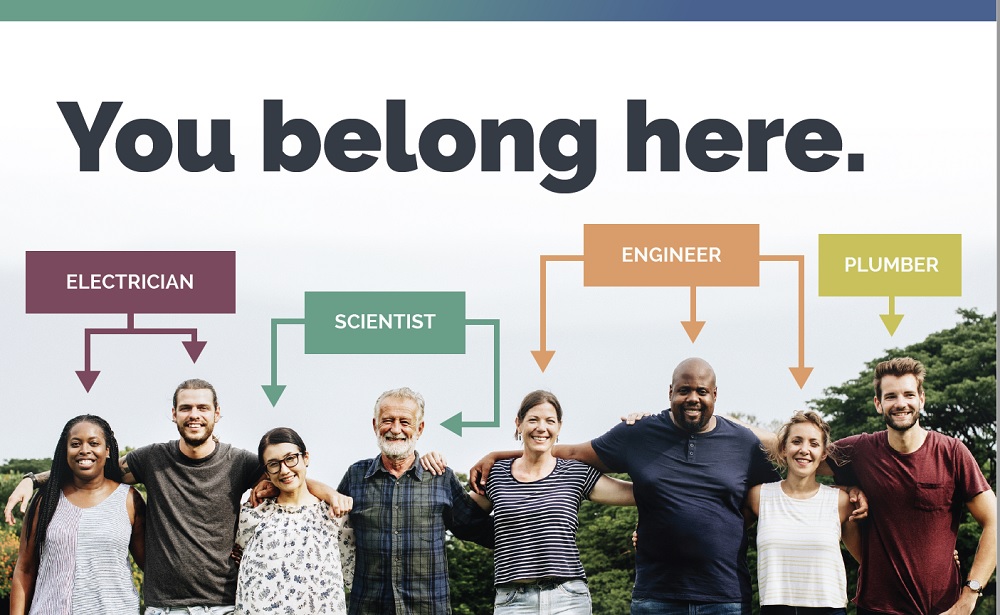
Artwork from the US Water Alliance’s Workforce Diversity Toolkit.
Workforce Diversity: Three Tips on Recognizing and Removing Bias from the Hiring Process
The US Water Alliance spoke with Louisville MSD and DC Water for some insight into their organizations’ efforts to seek out and maintain a diverse workplace. The VOW Workforce Diversity Toolkit contains materials to assist in the pursuit of a more diverse team—we hope you’ll use these tips, too.
1) Establish company values during the hiring process
Conveying your organization’s narrative early in the process is imperative; it lets potential applicants know you’re serious about living your company’s values and diversifying the workplace.
- Include/attach the diversity value proposition of working at your company and share your company’s core values.
- Include graphics in recruiting packages that show diverse candidates and reflect the narrative your organization is trying to convey.
- Block identifying information of applicants to remove unconscious bias from the outset of application reviewers (i.e., first and last names, home address, graduation dates).
- Make sure interview panels reflect demographic and diversity of thought.
2) Address existing internal and external biases
Women and people of color tend not to see themselves as eligible for positions on the operations side of the water industry, despite the lack of educational boundaries (i.e., most of these jobs require a high school diploma or GED; a college degree is not typically required).
Common internal and external biases contribute to this hurdle. For example, some men in the workplace assume women don’t want to work with their hands or work outside. As is the case with many other industries, people hire who they know.
- Increase efforts to make operations side jobs more appealing to women and people of color.
- Acknowledge these biases and act accordingly by getting HR involved. Discuss biases as they come up in meetings or day-to-day conversations.
- Offer apprenticeships to employees interested in other facets of the industry.
3) Demystify the water industry through representation and education
Some underrepresented groups see the water industry as too specialized, and the learning curve as too steep. Many people don’t have a firm understanding of potential career opportunities within the water industry.
- Representation matters. Seeing friends, relatives, and neighbors that work for the industry inspire them to join in.
- Place a greater emphasis on the intersection of recruiting and marketing.
- Consistent, positive messaging that appeals to underrepresented groups is both a marketing and recruiting tactic.
- Refine your brand in order to appeal to underrepresented groups.
- For example, reflect the industry as an environmental/safety advocate.
▪ This tactic broadens the appeal of the water industry to those that take a greater sense of pride and responsibility in their communities.
- Get involved locally and early. Many utilities work to establish relationships with schools in their area so that starting in elementary school, students know what their local water utilities do to keep their tap water and the environment safe. Continuing that partnership through high school and with other local partners can build a local pipeline of workers.
- In Louisville, the local urban league partners with a local nonprofit to teach basic construction skills. MSD sponsors this program and offers classes. MSD staff also do mock interviews and review resumes.
Thank you to Lynne Fleming of Louisville MSD and Lisa Stone from DC Water for taking the time to contribute their thoughts and solutions to this important conversation.
Learn more on the US Water Alliance’s Workforce Diversity Toolkit webpage.
